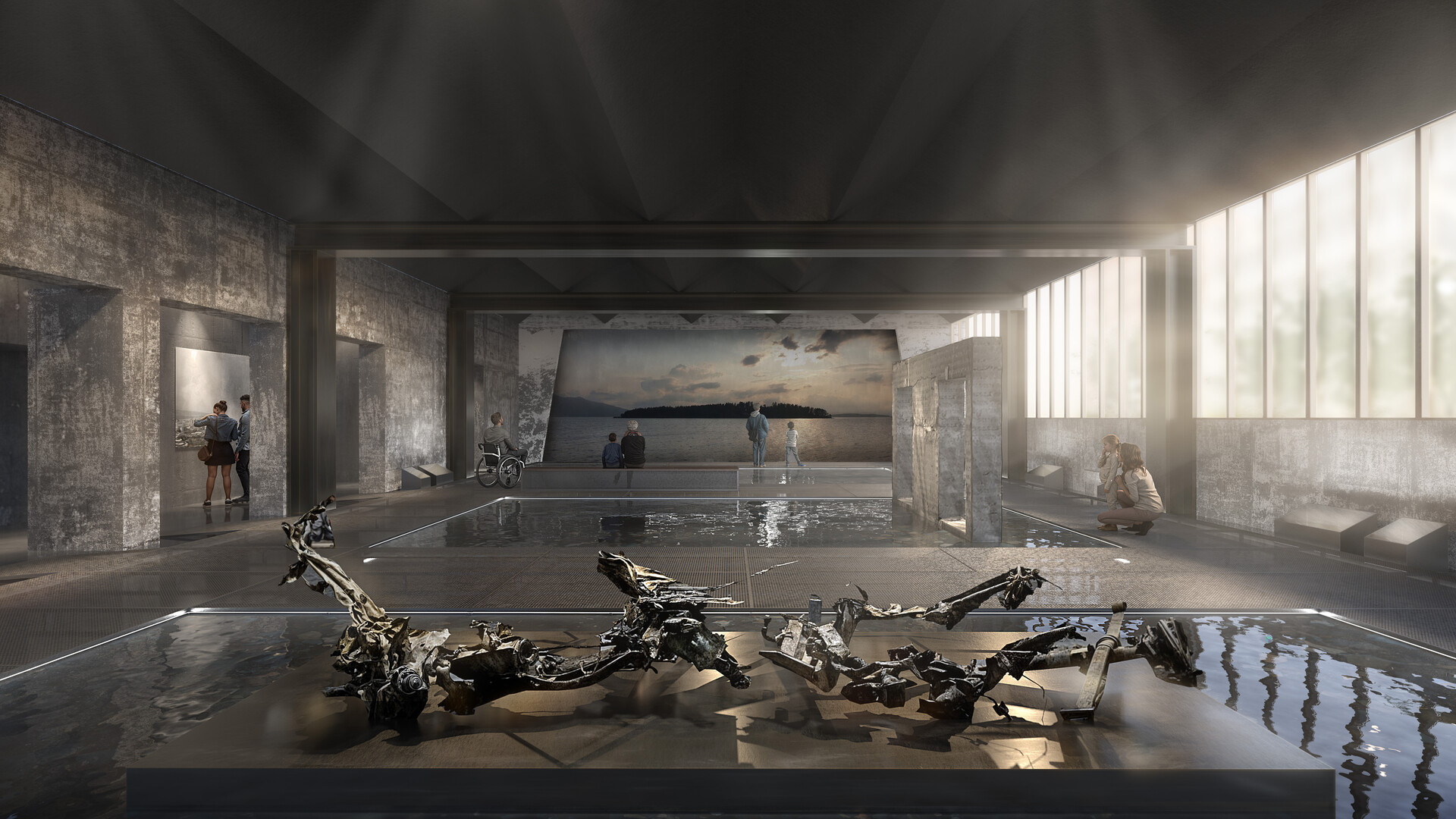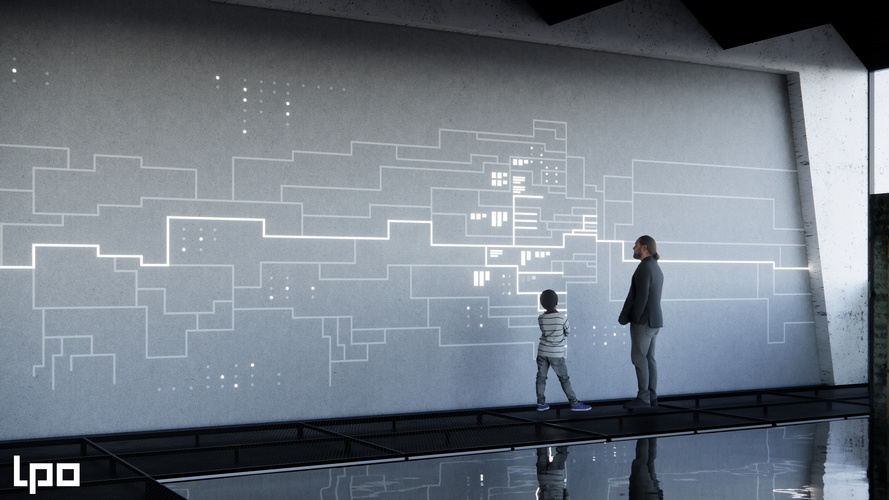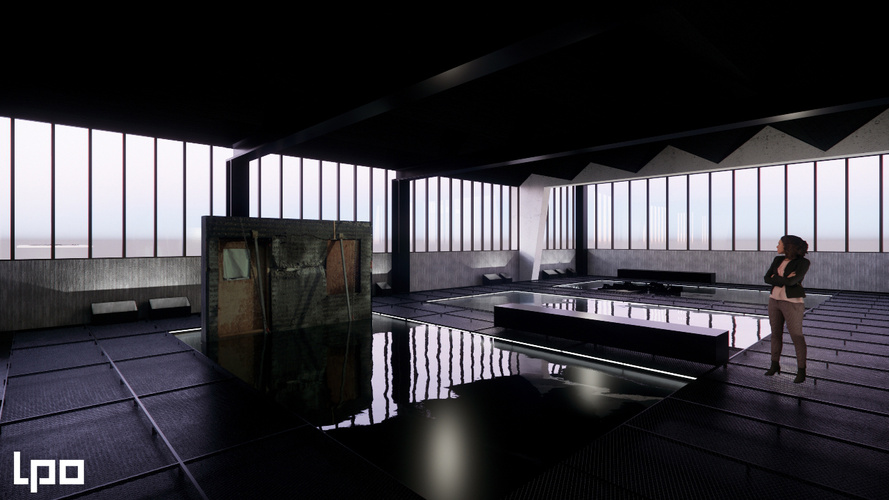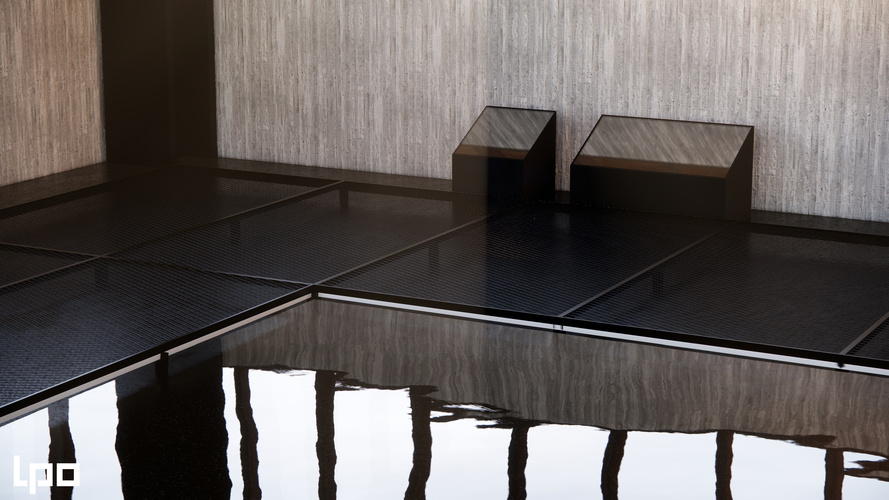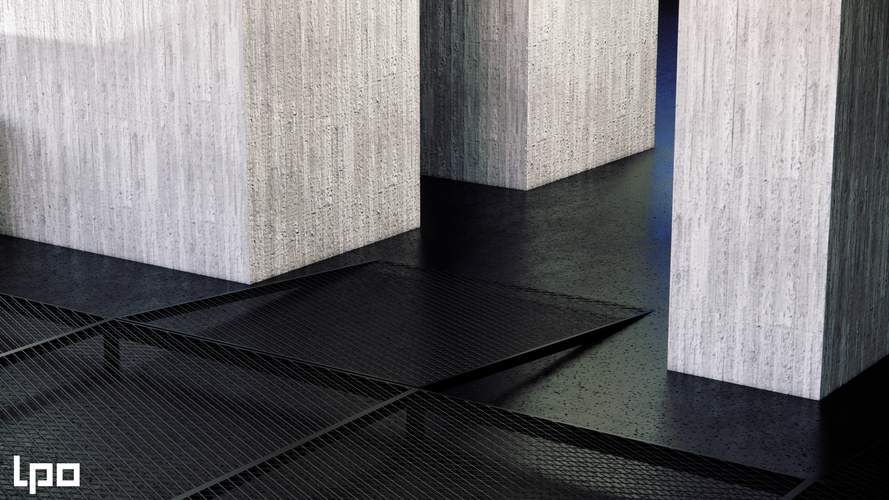22 July Center
Oslo, Norway
Our proposal for the exhibition about the terrorist attacks on 22 July 2011 won second place in the design competition for the 22 July Center in Oslo, Norway—the design aimed to create an interactive concept emphasizing lightness and participation.
Gagarin collaborated with LPO Arkitekter, Radius Design, AIX light design, Cowi sound design, and Lohne & Lauritzsen fabrication for the competition.
The main exhibition hall's design facilitates both outward information-seeking and inward reflection. This dynamic interplay is essential to empowering the visitor experience, allowing for a self-paced and personal engagement with the events of the 22nd of July. At the heart of the Eastern Pavilion, visitors would encounter a scenographically powerful room traversing the tranquil, mirrored waterscapes.
Illustrations: LPO Architects
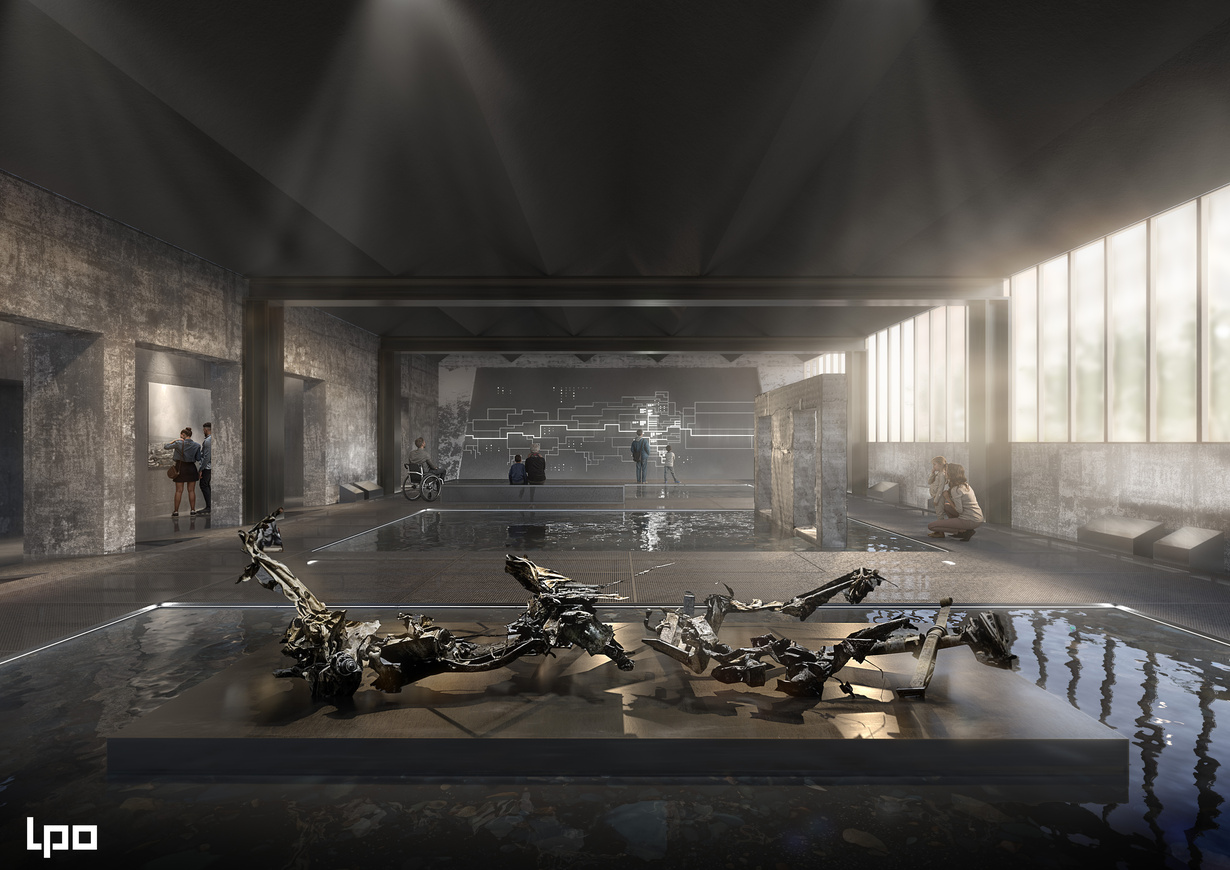
A timeline would serve as a navigational thread through the exhibition. From afar, it would offer a diagrammatic overview of events. Detailed texts and images would reveal themselves upon closer interaction, allowing visitors to engage with certain moments of the 22nd of July and its aftermath to a level they feel comfortable with.
The exhibition balances outward information-seeking with inward reflection, offering visitors a seamless experience that allows them to control their journey. Moving between intellectual stimulation and emotional introspection, they encounter elements that invite multiple interpretations. The reverent treatment of the July 22 tragedy is evident, with artefacts appearing submerged like nuclear waste beneath water mirrors, while distant yet visible. Daylight filtering through cracks symbolizes hope within the darkness.
Tranquility is maintained through subdued interaction, avoiding excessive movement within the space. Visitors engage through a subtle ritual of stepping in and out of interaction zones, allowing for a contemplative pace. From afar, content appears as abstract graphics, but as visitors approach, digital content activates, and artefacts behind transparent surfaces become visible. This design empowers them with the freedom to choose the depth of information and engagement they desire.
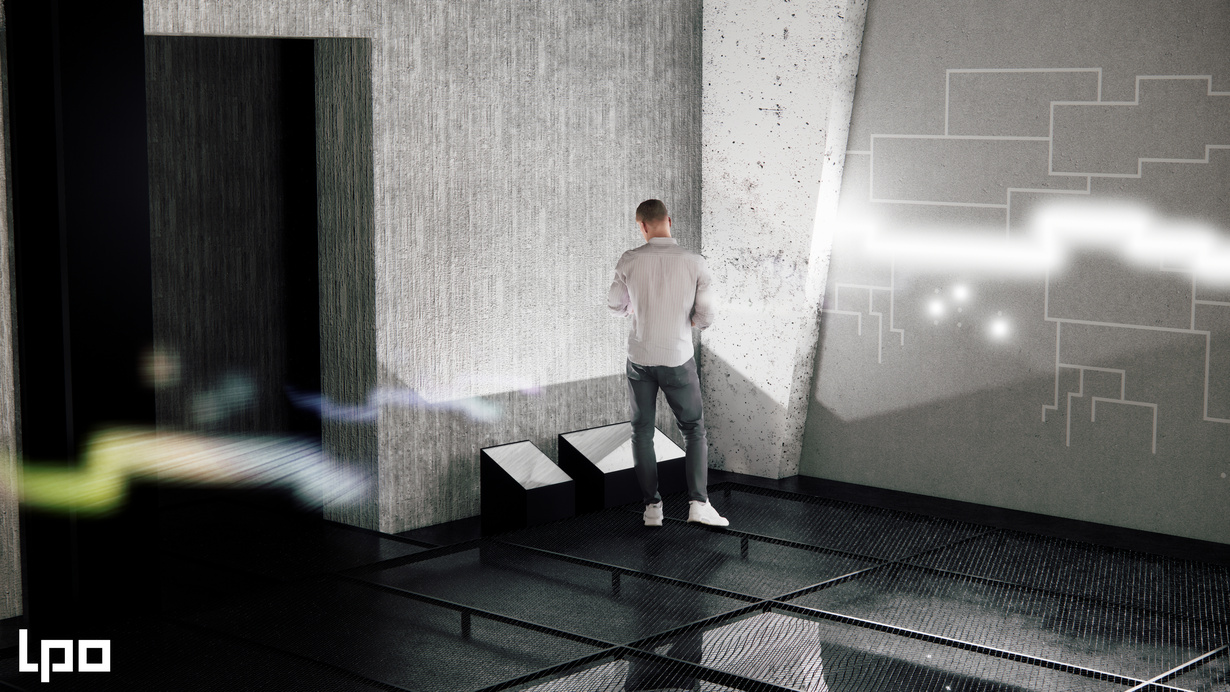
Artefacts would be housed behind screens that transitioned from opaque to transparent as visitors approached, allowing artefacts like explosion debris to emerge into view.
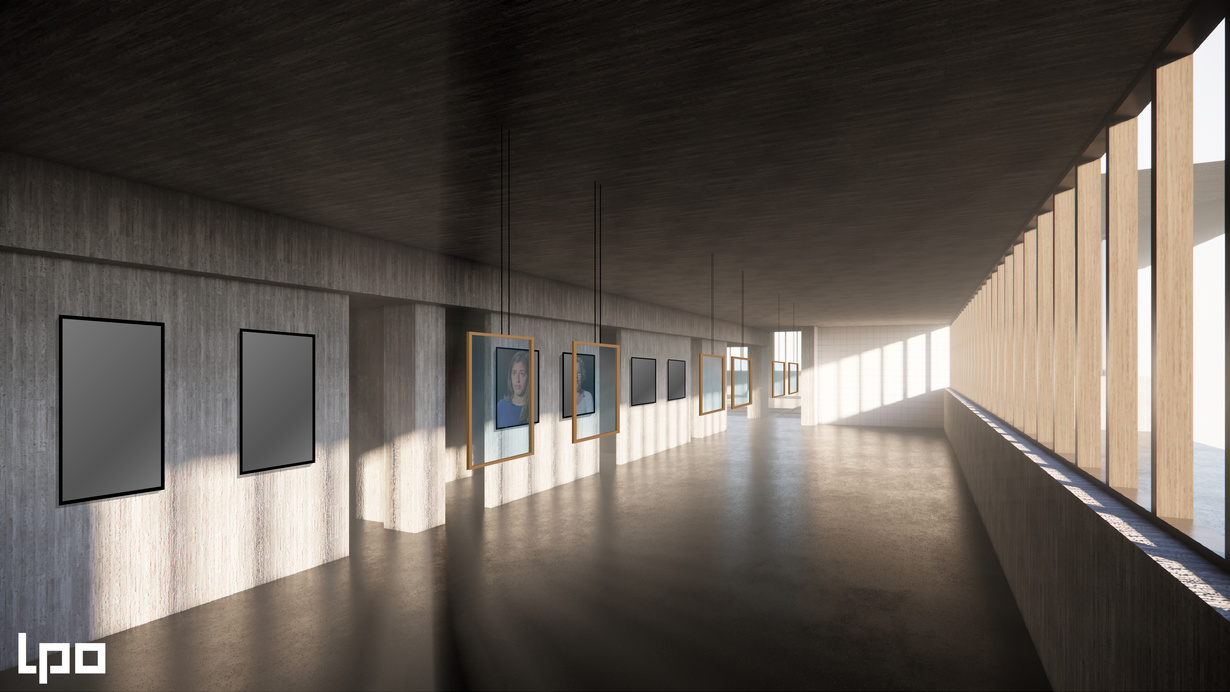
Windows would act as quiet carriers of meaning, using cross-polarization to display text directly on the glass surfaces. This innovative method would enhance the immersive experience, subtly integrating information into the environment.
The concept can offer innovative digital solutions, and LPO architects with Gagarin as a subcontractor offer both an exciting idea for the use of a new concrete wall in the eastern pavilion and other digital solutions. Jury comment
Our design sought to balance intellectual stimulation, emotional depth, and reflective calm. The journey begins with intellectual engagement, introducing complex themes and historical facts, then transitions to an emotional core in the main room, evoking deep feelings. Finally, it concludes with a reflective phase, promoting peace and contemplation.
Throughout the pavilion, a rhythmic flow guides movement between zones, emphasizing a theme of reuse, with materials from the actual explosion carrying meaning. The 22nd of July Center is a pivotal space for grief and resilience, inviting personal reflection and communal remembrance. This design empowers visitors by granting control over their experience, fostering deeper connections to commemorated events, while discreet interactions allow for an opt-out experience in a serene atmosphere.
